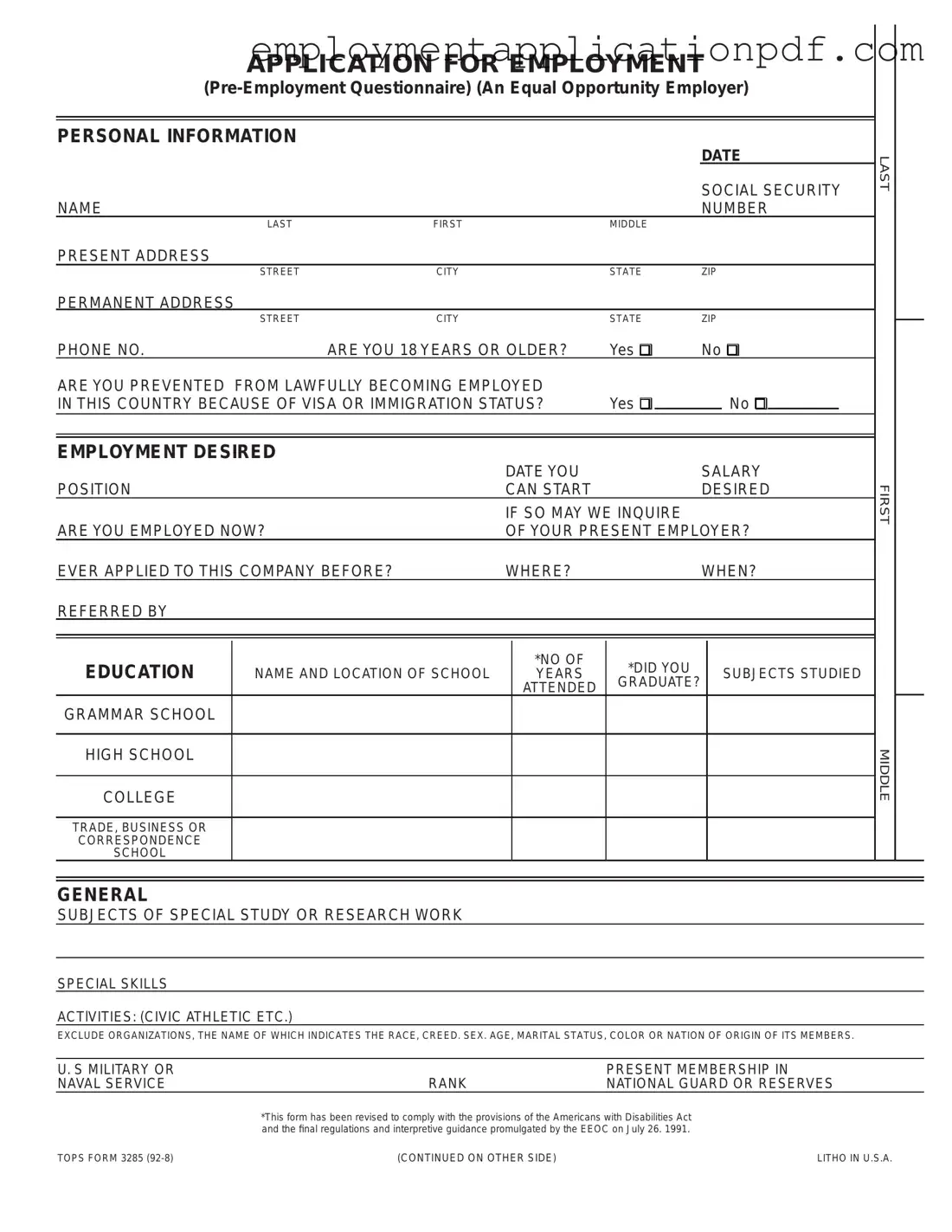The resume is one of the most commonly used documents in the job application process. Like the Employment Application PDF form, a resume provides potential employers with a summary of a candidate's work history, skills, and education. However, while a resume is often tailored to highlight specific experiences relevant to a job, the Employment Application typically includes standardized questions that all applicants must answer, ensuring a uniform collection of information for the employer.
A cover letter serves as a personal introduction to a job application. Similar to the Employment Application PDF, it provides insight into the applicant's motivations and qualifications. While the Employment Application focuses on factual data, the cover letter allows candidates to express their personality and enthusiasm for the position, creating a narrative that complements the more structured information found in the application form.
The job offer letter is another document closely related to the Employment Application. Once an applicant is selected, this letter outlines the terms of employment, including job title, salary, and start date. While the Employment Application collects information to help employers make hiring decisions, the job offer letter formalizes the acceptance of an applicant into the company, marking the transition from candidate to employee.
The reference list is often submitted alongside an Employment Application. This document includes names and contact information for individuals who can vouch for the applicant's qualifications and character. Like the Employment Application, the reference list serves to provide additional insight into the candidate's background, but it focuses on third-party endorsements rather than self-reported information.
An employment verification letter is a document that confirms a person's previous employment. Similar to the Employment Application, this letter provides factual information about an applicant's work history, including job titles and dates of employment. However, it is usually generated by a previous employer and serves as a way to validate the claims made in the Employment Application.
The background check consent form is another important document in the hiring process. This form allows employers to conduct background checks on applicants, similar to how the Employment Application gathers necessary information about the candidate. Both documents aim to ensure that the employer has a complete picture of the applicant's history, but the background check consent form specifically authorizes the employer to investigate further into the candidate's past.
The tax forms, such as the W-4, are essential documents that new employees must complete once hired. While the Employment Application collects information to evaluate a candidate, tax forms are used to determine how much tax to withhold from an employee's paycheck. Both sets of documents are crucial for the employment process, but they serve different purposes and are filled out at different stages.
The non-disclosure agreement (NDA) is a legal document that may be required after an offer is made. Similar to the Employment Application, it is part of the hiring process, but it focuses on protecting the employer's confidential information. While the Employment Application gathers information about the applicant, the NDA ensures that the applicant agrees to keep sensitive company information private once employed.
The employee handbook is another document that relates to the Employment Application. Once hired, employees receive this handbook, which outlines company policies, procedures, and expectations. While the Employment Application sets the stage for potential employment by collecting necessary information, the employee handbook serves as a guide for new hires, helping them understand their rights and responsibilities within the organization.
The onboarding paperwork includes various forms that new employees must complete once they accept a job offer. Similar to the Employment Application, this paperwork gathers essential information about the employee, such as personal details and emergency contacts. However, onboarding paperwork is more comprehensive and often includes forms related to benefits enrollment, direct deposit, and other administrative tasks necessary for starting employment.
